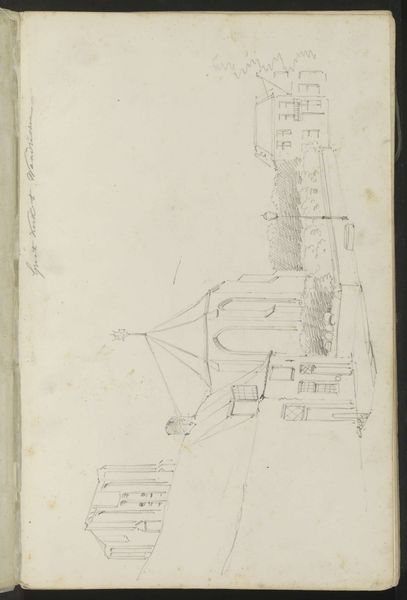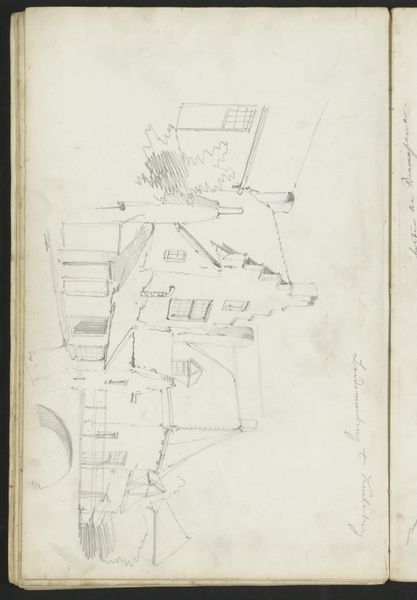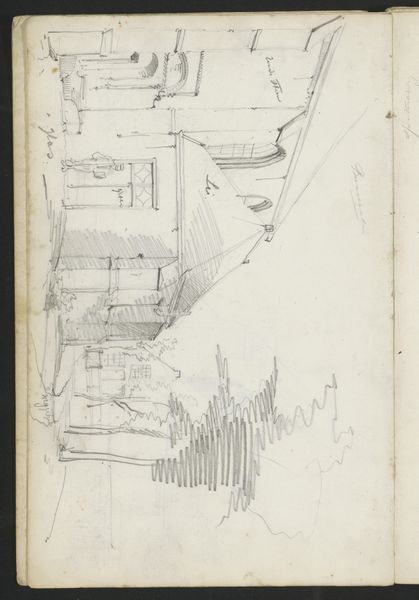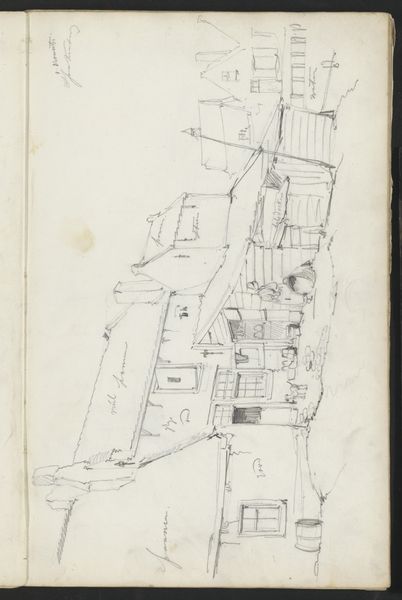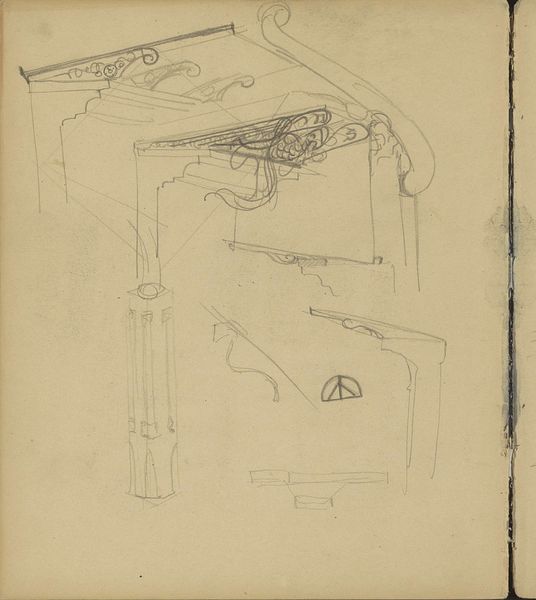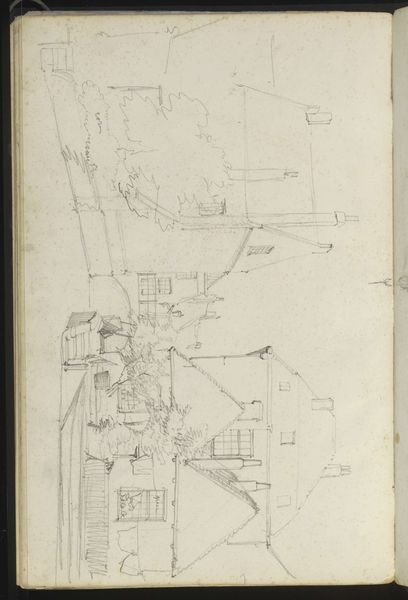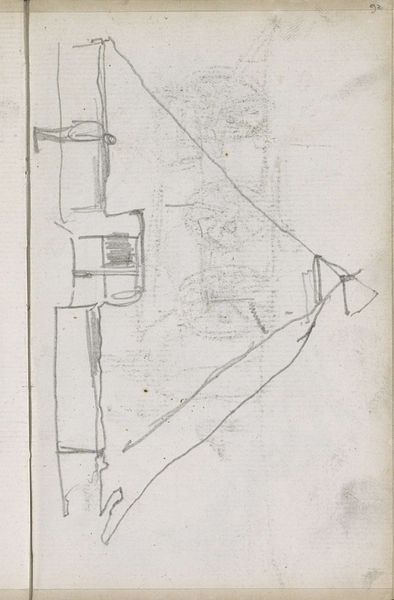
drawing, pen
#
drawing
#
pen sketch
#
landscape
#
pen
#
academic-art
#
realism
Copyright: Rijks Museum: Open Domain
Editor: So, this is "Exterieur van een kerk te Bunschoten," a pen and ink drawing by Willem Koekkoek, dating somewhere between 1849 and 1895. The lightness of the pen strokes and the subject matter—the side of a church, rather unassuming—creates a somewhat subdued mood for me. What catches your eye when you look at it? Curator: It whispers rather than shouts, doesn't it? For me, it’s about capturing the soul of a place through simple observation. The artist isn’t trying to impress us with grandeur; instead, it’s this quiet reverence for the everyday architecture, the kind that blends into the background but holds the history of a community. Do you feel a sense of time passing as you look at it? Editor: Definitely. It feels like a snapshot from a simpler time, perhaps. There’s also something incomplete about it, almost like a preliminary sketch, adding to that ephemeral feeling. I wonder why Koekkoek chose to present it this way, rather than a fully rendered piece. Curator: Perhaps the incompleteness is the point! It invites our imagination to fill in the gaps, to construct our own narrative about Bunschoten. Think of it as a memory, fleeting and incomplete but intensely evocative. The lines might be sparse, but they evoke so much about place, memory, and atmosphere. The light, captured so subtly…it gives a feeling. What kind of person do you imagine lived there? Editor: I never thought of it that way, as an invitation rather than an omission! Seeing it as a shared canvas of memory opens up so many possibilities. Now, I want to know more about Bunschoten during that time! Curator: Precisely! And that's the magic, isn't it? A seemingly simple drawing sparks a connection to a time, a place, and the untold stories held within its walls. These historical traces resonate in a new way when viewed with a modern eye.
Comments
No comments
Be the first to comment and join the conversation on the ultimate creative platform.

